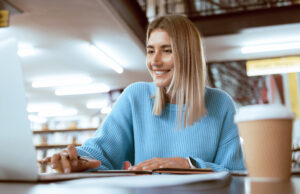Ask a college president what all of their students have, and they will invariably respond: “a cell phone.”
One college president answered this question a couple of years ago: “Students may or may not have a computer, but they will have a cell phone.”
At Ocelot, we’ve consistently heard variations of this answer over the past couple of years. While these conversations are anecdotal, what we’ve heard matches research from Pew, which says that over 95% of all Americans have a cell phone. And over 77% (as of 2018) have a “smart phone”.
Communicating with Students on Their Terms
Given the ubiquity of cell phones, they are an attractive vehicle to communicate with students via text messages and nudges. A mobile-first or even a mobile-integrated communication approach can foster greater student engagement.
But schools should be careful not to overuse or abuse them, lest they become white noise. Schools should understand that the mobile device is a busy place where a lot of activity occurs.
There is a great opportunity to use text messages in a way that students appreciate– ways that make their lives easier. And, in the process, methods that can mutually benefit the college.
Taking A Strategic, Targeted Approach
At a school conference before the pandemic, the consulting agency EAB presented an informative session titled The Advising Office of the Future.
One of the key takeaways from the session was to use text messages with students in quick, targeted doses.
For example, rather than sending a text that says, “The Registration deadline is next week. Please go to this link and complete the registration.” Instead, consider something much more straightforward, such as “Registration deadline is next week. Do you plan to register? (Y / N)”
The benefit of the latter approach is that it enables the student or prospect to quickly respond. If the ask is greater than that, response rates will be much less.
And what does the school get with these Y or N responses? The school learns who is planning to register and who is not. And the school can then develop the appropriate messaging and human interventions to aid the group of students planning to register to get them through the process.
Segmenting students into more likely to register and less likely to register enables a school to be more efficient with its time.
This example is a very simple instance of how targeted messages can generate useful and actionable data.
The Path to a More Efficient Future
In the midst of uncertainty and changing times, colleges will need to think more than ever before: how can our institution get more efficient?
Targeted text message campaigns have the potential to achieve a double-win: (1) enabling schools to be more efficient with their time, and (2) reducing the friction and roadblocks for students when it comes to registration, financial aid, completion of paperwork, etc.
There is an expression TLDR.It means Too long, didn’t read. It came from an IT Executive who shared that if an internal email were too long, it would not get read — defeating the whole intent of the email itself.
We all can recognize that in an era in which speed is so important, lengthy emails will not have the same impact that shorter bursts of information or simple Y / N text messages will have.
If our goal is to help serve students where they are, we should all consider strategies that give students multiple ways to engage. Email, phone, in-person, chat (live and AI-powered), how-to/explainer videos, and text messages should all be part of the picture.
Schools can achieve great efficiency by combining speed with simplicity. Doing so is the formula that will work best given the ubiquity of mobile devices amid an era in which there are so many competing stimuli happening on mobile devices themselves.
To learn more about Two-Way Texting with Ocelot, click here.








